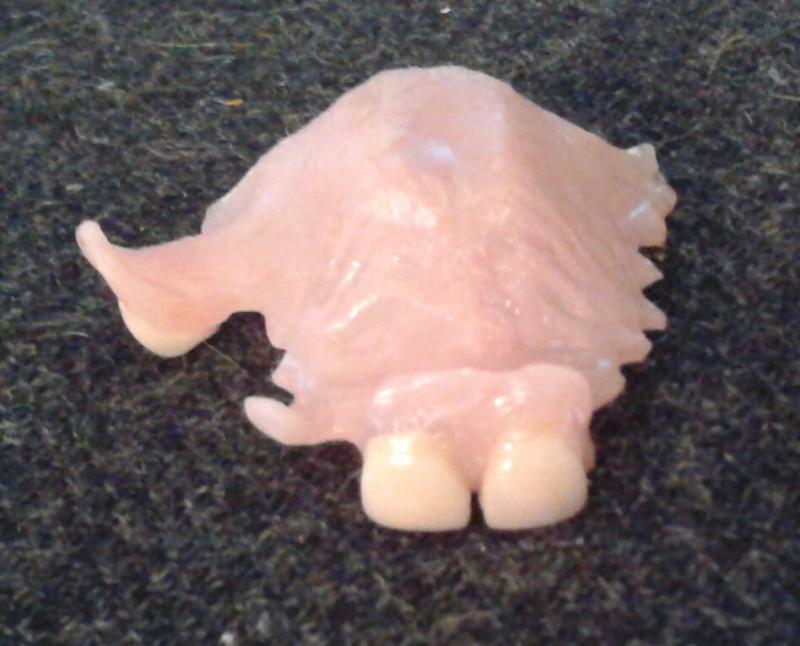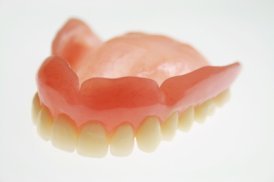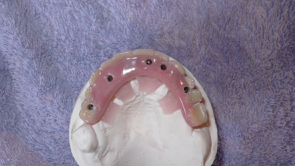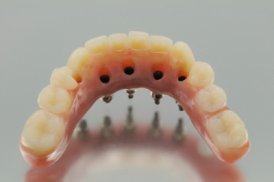Cost Of Dentures
vs Implants
The cost of dentures vs implants can be confusing when you are thinking about replacing a tooth or several teeth. You're not alone! Nearly 70% of people in the USA between 35 and 44 have at least 1 missing tooth.
The Good News is that there are several options for replacing a missing tooth or teeth. So what are the differences between dentures and dental implants? There are several. In fact, dentures and implants lie at opposite extremes of cost for replacing a missing tooth or teeth. The cost of implants vs dentures can vary by 10x.
I sometimes find that dentists will describe a denture to a patient in negative terms, and then go on immediately to talk about dental implants in positive terms, skipping over any other possible options that lie between these 2 extremes.
Why?
There's no doubt that dental implants are the Rolls-Royce option - but they are also the most expensive option. In simple terms, the dentist can earn more - a lot more. I think this failure to tell patients about other options between dentures on the one hand and implants on the other is unethical and just plain wrong.
Read on to discover the cost differences between dentures and implants!
Cost Of Dentures vs Implants
A denture is the simplest, quickest and usually the cheapest option. It's made up of 2 parts. First, there is the acrylic "tooth" part that is visible when you smile. Second, there is the acrylic base plate that holds the "new tooth" in position in your mouth.
The acrylic plate fits into the roof of your mouth ("palate") for upper teeth, and around the insides of your lower teeth and under your tongue for lower teeth.
The simplest acrylic denture has just 1 or 2 teeth (usually at the front of your mouth) and can be called a dental flipper.
 a dental flipper
a dental flipperCost Of Dentures vs Implants
This very simple denture is usually regarded by dentists as a temporary measure, to get a tooth into your smile quickly until a more permanent solution is completed. It is not fixed in place. You can take it out.
For a 1 or 2 tooth gap you may also be suitable for any of the following options, which are all FIXED - ie. you can't take them out. They are glued or bonded into place. Sometimes dentists don't talk about these much, because they are in a hurry to get to tell you about dental implants!
- Composite / resin bonding. You can get a new acrylic (dentists call it "composite") tooth bonded to your own natural teeth on either side of the gap. Normally the dentist does not have to drill your own teeth at all, and the procedure can be done in 1 appointment. And it's cost-efficient. (ie. relatively inexpensive) because there is no dental laboratory work involved.
- A Maryland or Rochette bridge. This DOES involve both dental
laboratory work AND some minor drilling to your natural teeth either
side of the gap. It is a ceramic tooth (which looks very natural) which
is held in place by a thin "wing" or tab that is bonded to inner side of
the tooth or teeth next to the gap.
- It's similar to the Composite/resin bonding, but with higher quality materials, so it looks better from a cosmetic point of view, and it's stronger. It will generally last longer and keep it's natural looks because the ceramic does not stain over time the way that composite material can. BUT it's more expensive.
- A conventional fixed bridge. This also involves a dental laboratory (and therefore extra cost), and requires your own teeth on either side of the gap to be drilled down, to allow room for the ceramic and / or metal skeleton of the bridge. This is a very strong solution, providing the teeth supporting it are in good condition.
 A conventional porcelain bridge
A conventional porcelain bridge The same bridge viewed from the "inside".
The same bridge viewed from the "inside".SO, for small gaps of 1 to 2 teeth, you can choose between a dental flipper denture, or 1 of the 3 fixed options I've just talked about. But if you have MORE than 1 or 2 teeth missing per gap, then you will need a bigger denture, and the options above will not work.
An acrylic denture can replace any number of teeth - even ALL of them. Dentists call this a Full denture or a Complete denture. An upper full denture will cover the whole roof of your mouth (your palate), to get enough suction or grip to stay in place. Sometimes, though, the shape of your upper jaw and palate will not give enough grip and stability to your denture, and it will feel loose. This is where a denture adhesive (or "denture glue") can help. It's not the perfect answer, but it helps.
 A full upper denture
A full upper dentureA full denture in the lower jaw is often a problem, because there is no "palate" in the lower jaw to give a big surface area for the denture to rest on, AND your tongue is there in the middle, moving around as you speak and eat, dislodging the denture. Again, a denture adhesive may help.
But if your dentures are loose, or move about when you are eating or talking, the ultimate solution is dental implants.
Cost Of Dentures vs Implants
Dental implants are an alternative to all the other possibilities above. BUT there's ONE THING to make absolutely clear. A dental implant is NOT a replacement tooth. A dental implant is just the foundation for a replacement tooth.
It's a bit like building a new house. First, you have to lay the foundations for the house, according to the ground you are building on, AND according to the structure of the house you are building.
ONLY AFTER the foundations are completed and solid can you start to put the house up!
It's the same with dental implants. They are the foundations for the replacement teeth. What type of implant, and how many implants, depends on the "ground" you are working with (ie. your jaw bone - is it strong and dense, or porous and less strong?); and also on what sort of teeth, and how many, you are going to put onto the dental implants.
There are a number of combinations and possibilities, but I will try to keep this simple and cover the 3 main options, simplest first, moving on to more complicated;
- 1, 2 or 3 implants which then carry individual (ceramic) crowns or caps.
- 1, 2 or 3 or more implants which support a ceramic bridge with a metal skeleton hidden inside - for bigger gaps.
- 4 to 6 implants carrying one big ceramic or zirconia bridge - say 10 teeth. An example of this is All On 4 Implant Dentures. This is the most expensive option, and can cost from $10,000 to $20,000 or more!
- Straight dentures, with NO implants, cost around $2,000 to $5,000
The choice between the options above is largely dictated by how many teeth are missing. But they are all alternatives to a denture.
What are the advantages of dental implants over dentures?
They are fixed in place, both the implants and the teeth that attach to them. You cannot take them out at home. But the dentist can, in his office, for cleaning and repairs if needed.
This means that teeth supported by implants are rock-solid. Just like normal teeth!
Cost Of Dentures vs Implants - Can You Combine Them?
Full denture held in place by dental implants.
This is a combination of dentures and implants - it doesn't have to be one or the other!
But how does this work?
First, this combination "hybrid" denture is designed to replace ALL the teeth on either your upper or lower jaw. It usually involves 4 to 6 implants on the lower law, or 6 to 8 implants on the upper jaw. The upper jaw requires more implants because the bone is less dense, and there may be less room to fit implants when compared to the lower jaw.
Once the implants are in place and healed, we need to make the teeth to go on top!
One alternative is to make a conventional bridge, which is finished in porcelain. This type of bridge looks very natural, and feels very smooth to the tongue, but it suffers from 2 drawbacks; First, it is expensive to construct. Second, it is difficult to repair if anything chips or breaks.
 This is an acrylic denture with acrylic teeth, with screw holes to allow fixing to the implants.
This is an acrylic denture with acrylic teeth, with screw holes to allow fixing to the implants.The other alternative is to make up a thin metal alloy skeleton that fits over the implants, and then build up the new teeth and gum tissue on the skeleton. The teeth are acrylic denture teeth, and the base is pink denture acrylic. This process has 2 big advantages - first, it is relatively quick to make in the dental laboratory, and so the lab costs are lower. Second, if anything should chip or break, it is much easier to repair than porcelain.
This acrylic "denture" with a metal skeleton buried inside is then
fitted to the implants with small precision screws. So, although the new
"denture" is fixed in place by the screw system, your dentist can
remove it for cleaning and repairs if needed.
However, it's not quite as stain resistant as porcelain, so you need to clean carefully and slowly.
 Another acrylic denture with access holes and screws visible for fixing to implants.
Another acrylic denture with access holes and screws visible for fixing to implants.So it's possible to have dentures WITH implants to hold them down. This way, you get the benefits of of solid implants with the cost-effectiveness of dentures!
It doesn't have to be Dentures vs Implants - you can have BOTH!
But if you want to choose one or the other - either straight dentures OR implants with a fixed ceramic bridge, the cost of dentures vs implants is about $2,000 as against $20,000, depending on your own particular circumstances.



